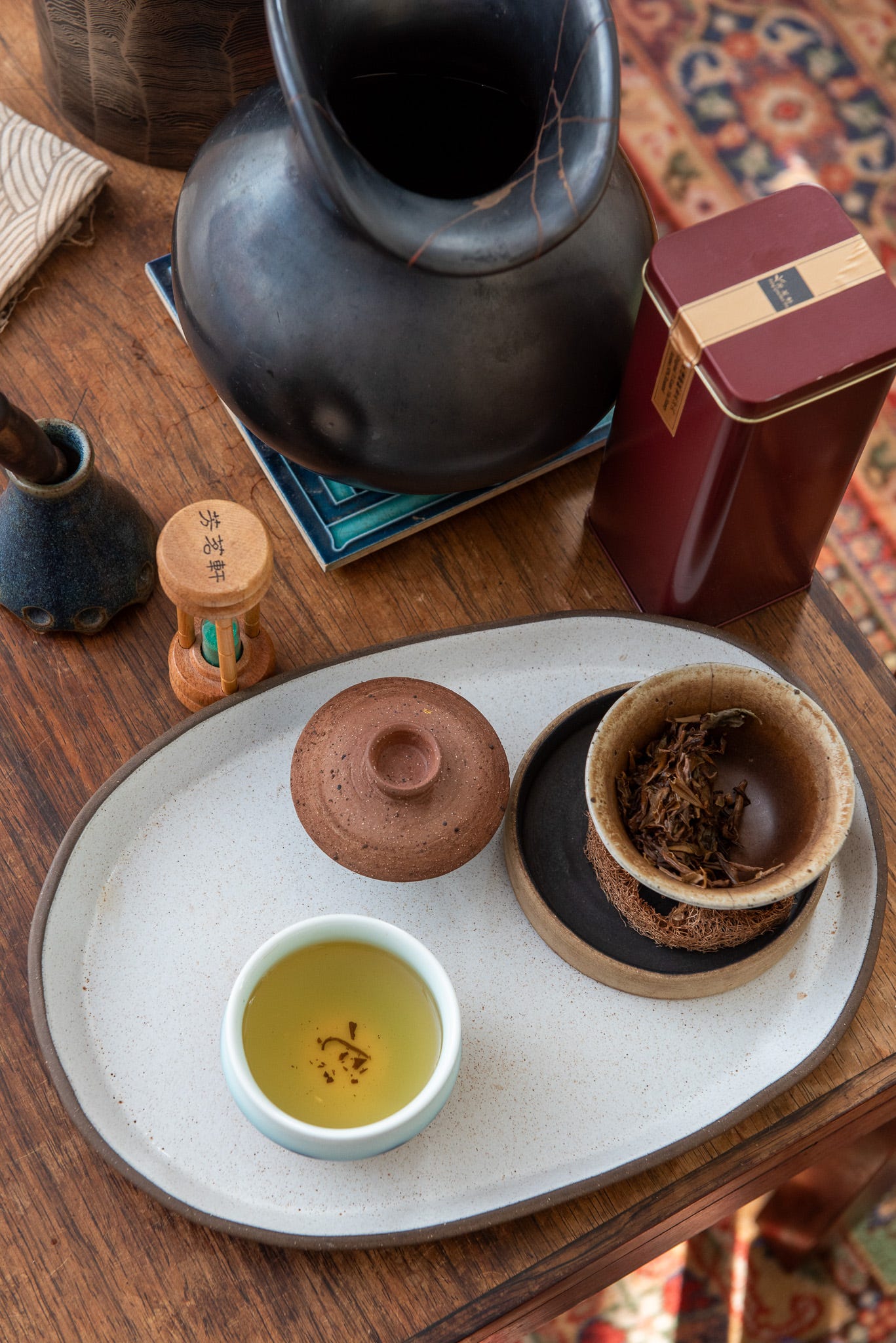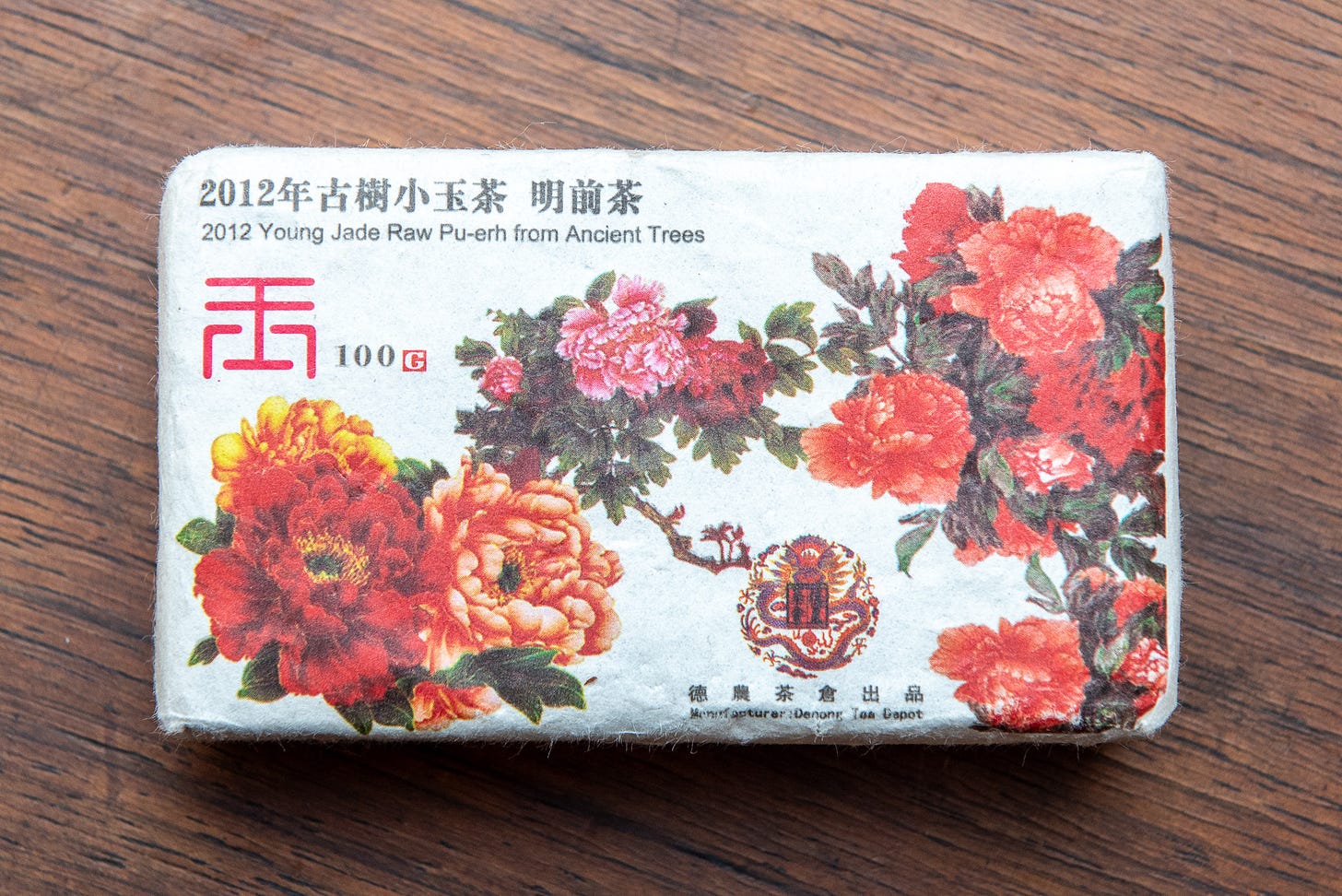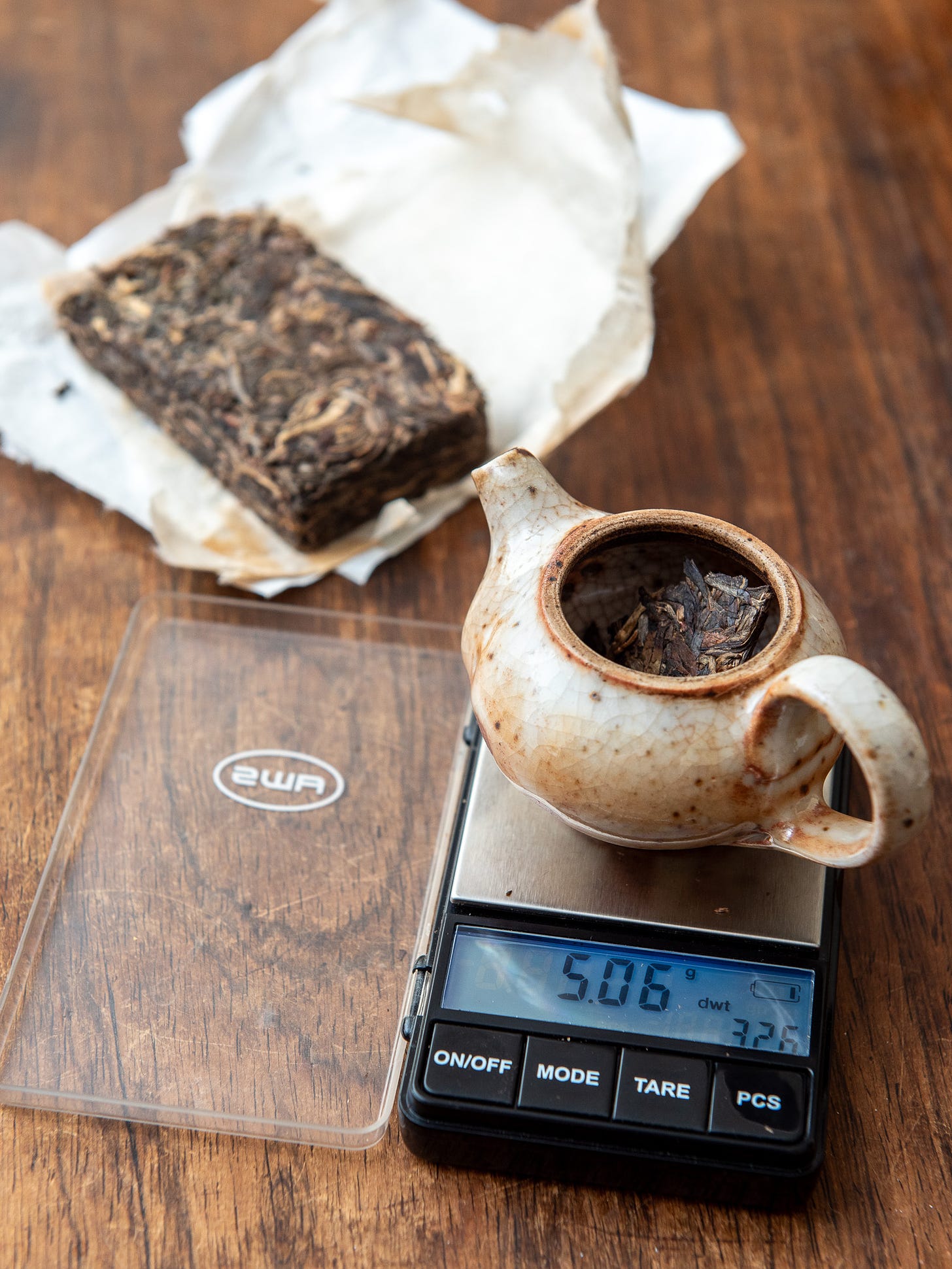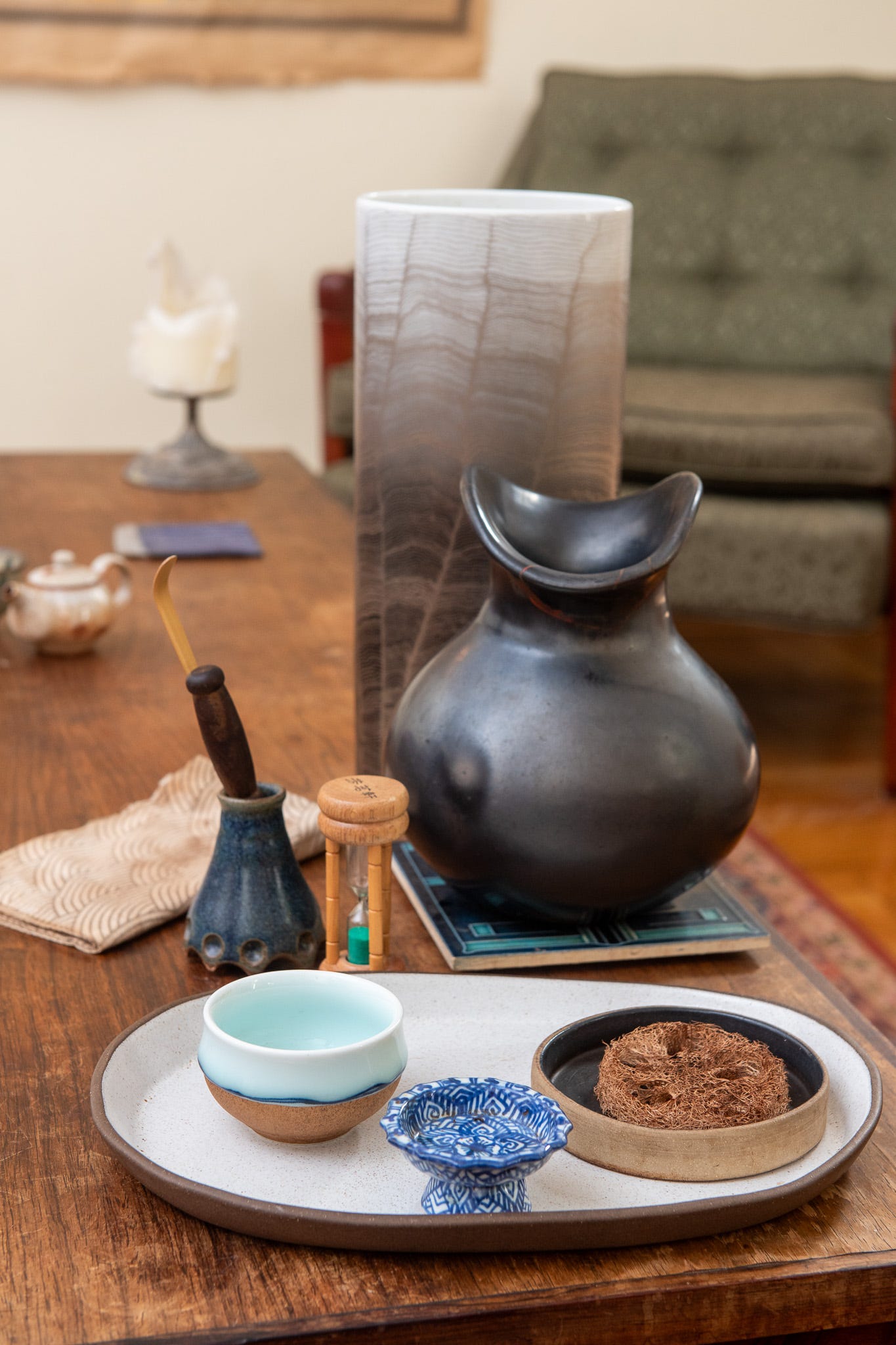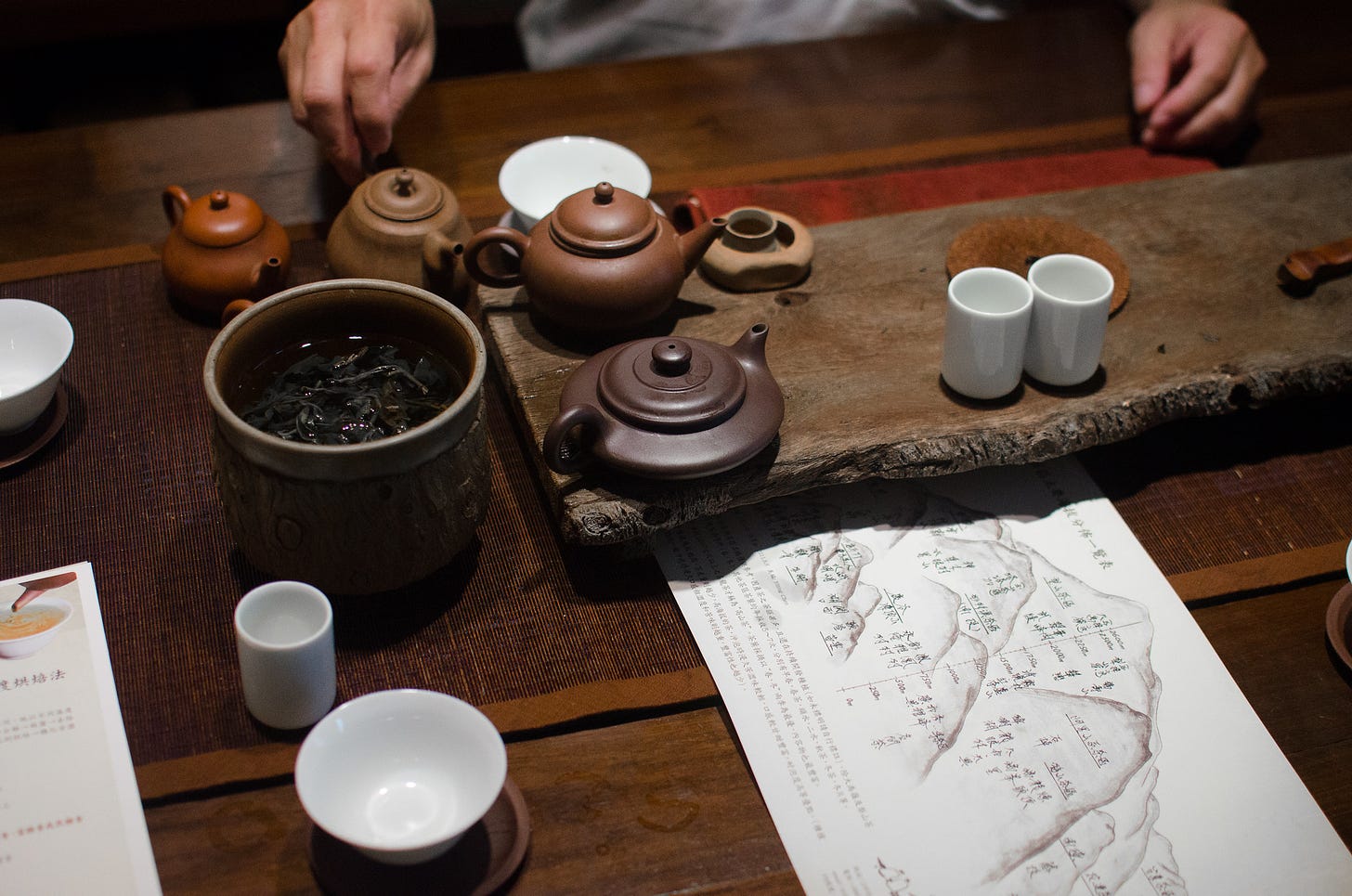How to set up a tea table
What to get from Bana Tea Company + an a la carte approach to finding teaware.
What to get from Bana Tea Company
The source: Bana Tea Company in Los Angeles, California
We’re trying something new for this week’s featured tea section. Rather than highlight a single tea, I want to talk about a vendor as a whole: their strengths, particulars, and must-try offerings. I often find that featuring a single brew doesn’t capture what’s interesting about a tea seller, and there’s a lot of interesting things about Leafhopper favorite Bana Tea Company. I’ve covered Bana Tea once before on Leafhopper, talking about their joint-melting Young Jade puer brick. Here’s a more holistic look at seller Linda Louie’s teas and why I think they’re worth bringing home.
The selection: “Bana” is short for “Banna,” as in Xishuangbanna, one of the major puer regions of Yunnan. Linda primarily sells puer teas, but also a range of greens, whites, blacks, and oolongs, so there’s something for everyone. When Linda retired from her day job as a court administrator in Los Angeles, she dove deep into tea with a focus on puer, studying with industry rainmaker Vesper Chan. Many of her teas come from Chan’s private label productions, which are also sold at Chan’s Best Tea House locations in Hong Kong and Vancouver.
Puer is the kind of tea you want to buy from a specialist, and even within that realm, there are many kinds of puer sellers. Some act as warehouses of well aged tea. Others operate on a direct sourcing model, where they buy and commission fresh tea to blend and press themselves. Bana is more of a curator, focusing on high end teas made within the last 15 years, though Linda also has some tea dating back to the 1970s. Many of her teas come from older trees in natural style gardens rather than tightly packed plantations. Tea from older trees is said to have greater depth and character, owing to a more established root system and a richer microbial community in the soil that can accompany undisturbed growing areas. Linda is one of the few sellers I trust to not exaggerate claims about this kind of cultivation.
Bana eschews the single-origin focus on regional productions that dominates many Western sellers of young puer tea. What unites Linda’s catalogue is a clear sense of personality. I go to her for teas that are deceptively complex and layered, with refined flavors and strong somatic effects. When you drink them, you feel it, even if you can’t articulate what about them compels you to come back for another sip. This kind of quality doesn’t come cheap, and many of Bana’s teas could be considered “investments” in educational experiences. Fortunately she offers sample sizes of many so you don’t have to commit to a whole cake.
What to get: My personal recommendations reflect my own tastes. I don’t drink much shou (ripe) puer, so I don’t have many suggestions on that front. These are all teas I’ve purchased before and would buy again.
2012 Young Jade Ming Qian Raw Puer Brick: Featured previously on Leafhopper, a bittersweet tea with powerful feelings through the body.
2015 Enchanting Beauty Raw Puer: Delicious and sweet “modern style” raw puer. The texture is like drinking pastry cream.
2019 1,000 Years of Anticipation Raw Puer: Allegedly made from very, very old trees. I can’t verify that. What I can say is this expensive tea tastes and feels serene. I save it for special sessions when I need to unspool and let my mind wander. The flavor is clean bamboo. The somatic effect, for me at least, is profound.
Green Mandarin Ripe Puer: Well fermented ripe puer stuffed in young green mandarin orange skins. I like to keep these around for when I have a sore throat. The citrus oils go perfectly with the earthy tea.
2012 Tribute White Tea: A delicious and unusual example of aged white tea, which is usually made from older leaves. This comes from young buds full of downy hairs on the tips. Strong flavors of rose and Turkish delight with a deep and silky texture.
Aged Da Hong Pao Blocks: A pressed brick of the tiny fines sorted out of roasted Wuyi oolong production. Great value and incredible texture in this unassuming brick. I often bring a chunk to brew at dim sum.
Drunken Imperial Concubine Tieguanyin: One of the tastiest tieguanyin oolongs I’ve had stateside, made the traditional way with a deep charcoal roast. Brassy, tangy, and bright.
A tour of my tea table
Assuming you’re making tea with more than a mug and a microwave, you likely have some kind of spot where you steep and sit. In gong fu tea traditions, a well appointed tea table is a marker to other drinkers that you’ve made it as a true tea nerd.
This sort of setup is sometimes called chaxi: a stage or display for making tea. Different gong fu traditions involve different setups. Some people use elaborate silk fabrics with color-matched teawares to make whole tablescapes that suit a season or mood. In China and Taiwan, it’s become trendy to chop down old growth trees and lacquer them with layers of polyurethane to make eight-foot pieces of furniture with sculpted divots and drainage; a lumberjack’s idea of opulence that I find to be a gauche insult to the felled tree. Other people prefer to spend big on statement pieces, like the clay tea tray below that’s been intricately shaped to look like a piece of wood. The design of one’s tea table is a material reflection of their approach to drinking tea.
Most peoples’ tea setups are simple, practical arrangements to fit their own brewing needs. Personally, I find a nice table helps cultivate a calm and beautiful setting for enjoying tea that’s brewed with skill. Good tea doesn’t need aesthetic adornment, but it doesn’t hurt.
New tea drinkers setting up their tea tables often feel compelled to get everything they “need” all at once, prompting the purchase of whole tea sets. I don’t recommend this. Commercially available sets aren’t the best quality, or are wildly expensive for what you get. They may contain wares you’ll never use and omit items you actually need. In any new pursuit, it’s good to start simple and build your collection of wares as your practice grows. I’ve been working on my tea table setup for more than a decade, and each new piece contributes something uniquely tailored to how I drink tea.
Keep reading with a 7-day free trial
Subscribe to Leafhopper to keep reading this post and get 7 days of free access to the full post archives.




